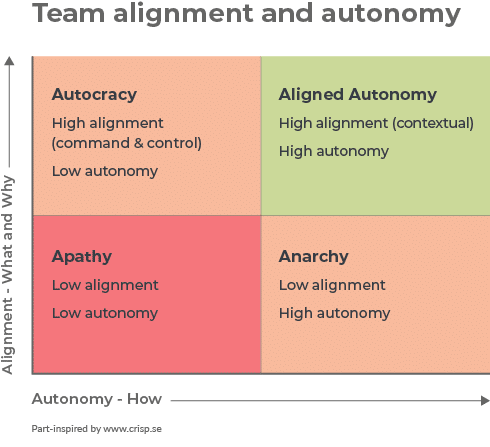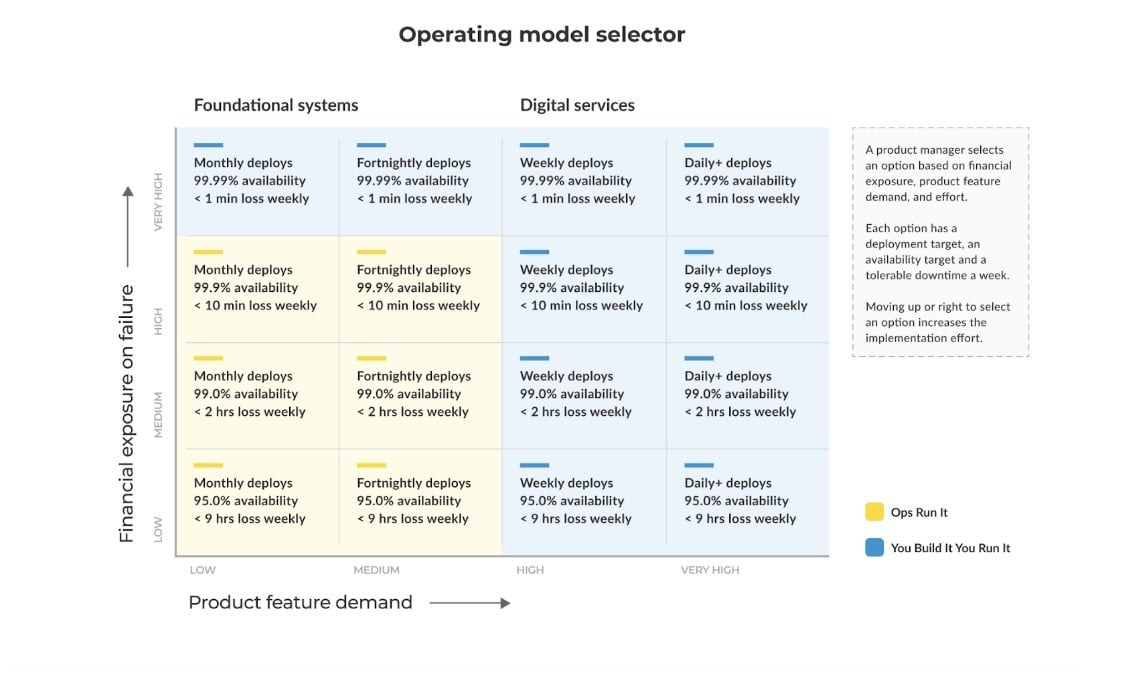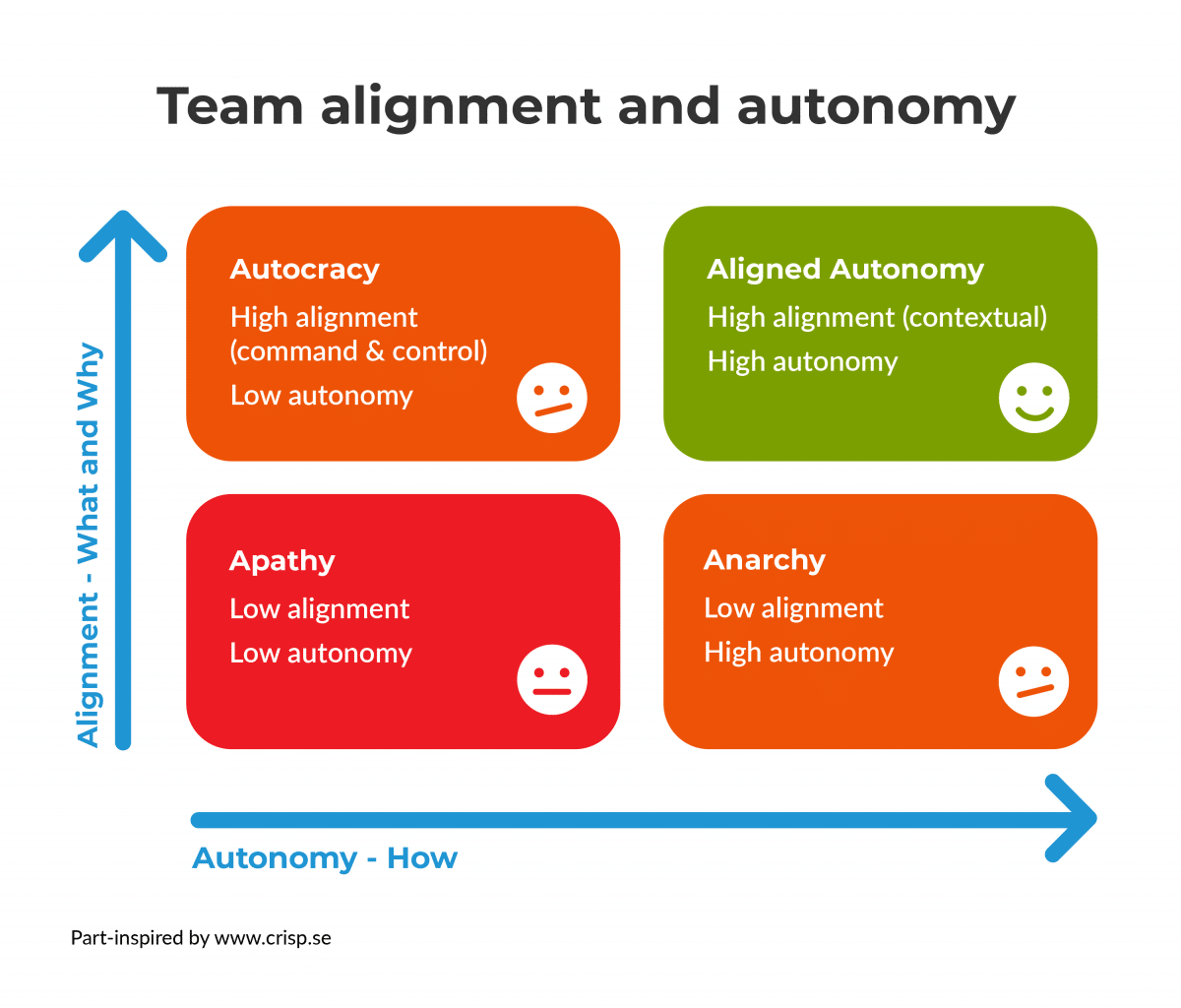4 ways to successfully scale agile delivery
I speak with customers and consultants across the Equal Experts network, to help our customers understand how to speed up innovation and reduce total cost of ownership at scale. Sometimes, our customers refer to this broadly as ‘scaling agile delivery’.
We’ve helped a lot of organizations to scale agile delivery successfully. Forrester Research recently published a Total Economic Impact (TEI) study that shows partnering with Equal Experts achieved a 123% ROI and 60% reduction in time to market for:
- A food franchise scaleup: 10 teams, 40 workloads
- A consulting organization: 10 teams, 100 workloads
- A high end retailer: 40 teams, 75 workloads
- A government department: 80 teams, 900 workloads
It’s hard to implement cross-functional, outcome-oriented teams delivering complementary product capabilities. The good news is success leads to a faster time to market, better quality, reduced risks, lower costs, and better user outcomes which improve your bottom line. My colleague Jon Ayre recently talked about how to iteratively scale agile. I’ll take that a step further. Here are four ways to scale up your delivery capabilities:
- Set teams up to have alignment with autonomy
- Introduce a You Build It You Run It operating model
- Focus on frictionless onboarding
- Create paved roads to allow teams to focus on delivering business value.
Create alignment with autonomy
Teams make faster and better decisions when they understand the intent, purpose, and constraints behind their work, and when they can act for themselves. Teams need to be aligned to deliver on strategy and execution, and autonomous to deliver outcomes without handoffs.
The problem is organizations often implement alignment as command and control. Teams are forced to treat alignment and autonomy as opposites, and they become stuck in one of two scenarios:
- Autocracy. Teams have high alignment but low autonomy. They incur delays because they can’t make decisions. At a media conglomerate, I saw 8 teams who constantly had to wait for 2 shared product managers to make all their decisions for them.
- Anarchy. Teams have high autonomy but low alignment. They’re unaware if they’re making good decisions or not. At an insurer, I saw 10 teams spending ~80% of their time on unplanned BAU work, because they’d implemented 10 different services with 10 different AWS runtimes.
The solution is to replace command and control with contextual alignment, and give teams the freedom to make good decisions in aligned autonomy. See why you need alignment with autonomy at scale.

Adopt You Build It You Run It
Teams achieve higher throughput, greater reliability, and a continuous learning culture when they build and run their own workloads. Teams need to become accountable for reliability as well as functionality, and focussed on outcomes rather than outputs.
The problem is organizational inertia towards using a central operations team to run differentiated digital services. It’s not possible to achieve a high throughput, high reliability baseline when delivery teams and an operations team are set up to work at cross-purposes. I’ve seen many organizations struggle to innovate because handoffs, competing priorities, and misaligned incentives occur every day.
The solution is to adopt the You Build It You Run It operating model for differentiated services, and keep your operations team for foundational systems. Make your product managers accountable for reliability, and put product teams on-call. See You Build It You Run It sounds great but it won’t work here and the You Build It You Run It playbook.

Focus on frictionless team onboarding
Teams are more effective when new engineers can make meaningful contributions as soon as they join up. Teams need a friction-free onboarding process that allows people to join a team and be productive on day one.
The problem is organizations usually treat onboarding as an afterthought. The onboarding process is disjointed and time-consuming, because it lacks a clear owner and is split between multiple organizational functions. I’ve seen engineers on a new team wait for weeks to commit their first line of code, because they’re waiting for the necessary permissions.
The solution is to automate onboarding tasks and reserve team capacity for knowledge sharing, so new joiners are immediately productive. Replace gatekeeping with trust and verify, share business domain knowledge, and establish a Bring Your Own Devices (BYOD) policy. See seven onboarding tips to accelerate productivity.
Build paved roads
Teams can deliver many user outcomes at pace when a majority of technology challenges are solved for them ahead of time. Teams need tasks such as microservice creation and telemetry provisioning to be self-service, fully automated, and fault free.
The problem is centralized technology capabilities are rarely designed to be user-centric. Teams can’t accelerate because they depend on platform teams focussed on infrastructure standardization, rather than the needs of their consumers. I’ve seen teams wait for weeks for a microservice provisioning ticket to be actioned by a platform team.
The solution is for platform teams to partner with product teams to create bi-directional feedback loops, and deliver self-service paved roads formed around engineer user journeys. Create a positive engineering experience for teams, focus on solving business problems with minimal cognitive load, and prevent platform teams from becoming service desks. See the Digital Platform Playbook.
Find out more
If you’d like to know more about how to successfully scale for agile delivery, get in touch! We’d love to hear from you.
Context matters
Most organisations considering agile as an approach start small and explore its strengths and weaknesses. If this is you, then I salute you. You did absolutely the right thing. The core principle of any iterative method is “test and learn”, and that’s exactly what you did. So now you’ve hopefully seen the value, and want to scale your agile approach up, so the whole organisation can benefit. Where should you start and what pitfalls should you avoid?
The first thing I need to tell you before you roll agile out across your organisation is this. Don’t. Agile is an excellent approach, but as with all solutions it has its place. Context is everything. Agile works best in situations where you’re trying something new, or making something for the first time. It’s for situations where you don’t already know the answers. That’s why test-and-learn is so important. Only scale agile up to cover those activities.
(For more information on where agile fits and how to introduce it, take a look at this blog post.)
No one-size-fits-all frameworks
Agile is about autonomy and freedom to change direction. It’s about achieving outcomes, not about completing predetermined tasks. So, avoid frameworks that promise to create control structures and processes that allow you to manage agile at scale. The whole point of agile is it shouldn’t be managed from above. Set goals and guidelines, but don’t micro-manage.
An agile team explores the unknown and reacts to what it finds. Trying to control that process, and create predictable plans and portfolios is tantamount to practising astrology and reading tea leaves. That’s not to say agile has no rigour. It’s just that the rigour is applied within the team, not from outside. Agile teams seek to achieve an outcome and deliver value. They don’t focus on completing a set of predefined tasks.
Most frameworks apply techniques from other methods to try to make agile more familiar and comfortable. All this achieves is a conflict between two different approaches designed for two different contexts.
In short, there’s nothing safe about a scaled agile framework.
Fund teams, not projects
Agile initiatives aren’t about completing a fixed deliverable or task. They’re about achieving an outcome. You can’t define them as tightly bound projects with a gantt chart and fixed budget. While an agile initiative is in progress it should be considered to be an operational activity, and should be funded as such. So, don’t create a project budget.
Form agile teams to deliver specific outcomes that align to your organisation’s strategic goals, and then let them use their skills to deliver results for as long as those outcomes are needed to fulfil your strategy. The benefits you expect from the assigned outcomes should allow you to define an acceptable financial burn rate for the team. The team should then look to deliver regular value that justifies that burn rate, by achieving those outcomes, incrementally.
As outcomes are achieved, new ones will emerge that take your organisation to the next level. This ensures longevity for established teams, and ensures that beneficial change becomes a core part of your business’s operating model. An added benefit is that stable teams become high performing teams as you don’t have to form and reform them each time a new project starts.
Be agile about being agile
If you’ve already started using agile in your organisation, you’ll know it’s an iterative approach. You don’t go straight from nothing to a full roll out. Instead, you advance incrementally, learning and adapting at each stage of the way. You do this because what you’re doing is new. You’re not familiar with the potential pitfalls and unknowns. Doing agile at scale fits this category of activity. You’ve never done it before.
So, practise what you’ve learnt on the exercise of scaling. Move from one team to three. Wait to see how that works, and learn from it. Now, when you expand again, you can use those learnings to do it better. Keep going until you have as many teams as you need to cover all the strategic initiatives for change that you want to pursue.
Alternatively, grow until the operational cost is at a level that you can sustain and accept that some initiatives can wait. This just needs some careful juggling of cost versus benefit. Something that every successful business is already expert at. And you are, of course, a successful business because you’re still trading.
In summary
So, to scale agile successfully, don’t adopt a framework. Just apply these simple rules and trust your judgement:
- Restrict it to new things.
- Don’t wrap it in controls and frameworks.
- Fund teams not projects.
- Grow incrementally, learn and iterate.
By taking this approach, you’ll only go as far as is beneficial for your organisation. You’ll achieve sustainable and continuous change without making large, risky step changes. Best of all, if you do end up with a framework, it’ll be one designed specifically for your business, by your people. That’s how you get the buy in necessary to make it last.
That’s it. That’s how you scale agile.
I speak with customers and consultants across the Equal Experts network, to help our customers understand what’s needed to speed up innovation and reduce total cost of ownership at scale. That could include design systems, data workloads, or digital services.
We’ve helped a lot of organizations to scale up, including a government tax department with 80+ teams, and a high end retailer with 40+ teams. When I talk with people about how to succeed at scale, alignment with autonomy is a popular topic. In this series, I’ll look at the topic in-depth, including how to implement aligned autonomy in your own organization. If you’re in a rush, I’d just say:
To succeed at scale, give your teams contextual alignment with autonomy
Alignment is the what and why
Alignment means a shared direction. It’s the what and why – the glue between vision, strategy, and execution. Teams make better decisions when they understand the intent, purpose, and constraints behind their work.
Examples from the Equal Experts network of teams lacking alignment include:
- 3 teams at a telco unnecessarily building 3 different versions of 1 product capability
- 2 government agencies designing 1 shared service as 2 conflicting sets of APIs
- 10 teams at an insurer running 10 similar workloads on 10 different AWS runtimes
Autonomy is the how
Autonomy means an ability to make decisions. It’s the how – the capability and confidence to do something. Teams make decisions faster when they can do it without handoffs, and make better decisions when they can learn from their own mistakes.
Examples of teams lacking autonomy include:
- 8 teams at a media conglomerate waiting on 2 product managers to prioritize everything from 2 shared backlogs
- 10 teams at a payments provider waiting on 1 head of engineering to approve each technical specification upfront
- Forty teams at a government agency waiting on 3 solution architects to review each technology solution
Alignment and autonomy as opposites leads to failure
Your organization needs alignment and autonomy in product, culture, technology, ways of working, and more. However, it’s likely they’re treated as opposites, and you regularly have to choose between alignment and autonomy. This happens when your leadership implements alignment as command and control. As a result, when decisions have to be made teams will oppose increasing alignment for fear of less autonomy, and your leadership will oppose increasing autonomy for fear of less alignment.
Alignment without autonomy is autocracy. In the above media conglomerate example, the product director resisted team autonomy and insisted on 2 backlogs to protect command and control product alignment. The 8 teams were unable to work independently on product capabilities, and often had to wait for decisions to be made. Feature launches were only bi-monthly, and innovation was thought to be impossible.
Autonomy without alignment is anarchy. In the above AWS insurer example, the 10 tech leads resisted alignment on AWS runtimes, and insisted on the status quo to protect their autonomy. Those teams frequently had to upgrade, secure, deploy, monitor, and repair their 10 workloads in 10 different ways. Teams spent ~80% of their time on unplanned BAU work, AWS billing costs were higher than necessary, and there was little innovation.
Alignment and autonomy as opposites leads to failure. It doesn’t have to be this way.
Why you need alignment and autonomy to succeed at scale
Customers and consultants across the Equal Experts network agree that alignment and autonomy are key to success at scale. You can’t unlock speed, creativity, and innovation across 10, 30, or 50+ teams if they are unmotivated, and surrounded by dependencies. You have to increase alignment so teams understand the big picture, and increase autonomy so they can solve problems themselves with zero handoffs.
To succeed at scale, your organization has to implement alignment and autonomy together. This means replacing command and control with contextual alignment, and giving teams the freedom to to make decisions in that context. This is known as aligned autonomy, from Henrik Kniberg’s work on Spotify culture and Stephen Bungay’s The Art of Action. 
Implementing aligned autonomy starts with your leadership creating the right conditions. This includes outlining an organizational vision, communicating a product-technology context of desired customer impacts and technology direction, and creating a high trust culture in which outcome-oriented teams can make decisions for themselves. Those conditions then need to be protected by your teams using process and technology changes, such as automated metrics for customer impacts and paved roads for engineer enablement.
Independent, empowered product teams can achieve spectacular results. Later in this series, I’ll share how we help our customers to implement alignment with autonomy, look at the trade-offs in the Spotify Model and SAFe, and ask some Equal Experts consultants to contribute their own experiences. For now, I’ll just say:
To succeed at scale, give your teams contextual alignment with autonomy
